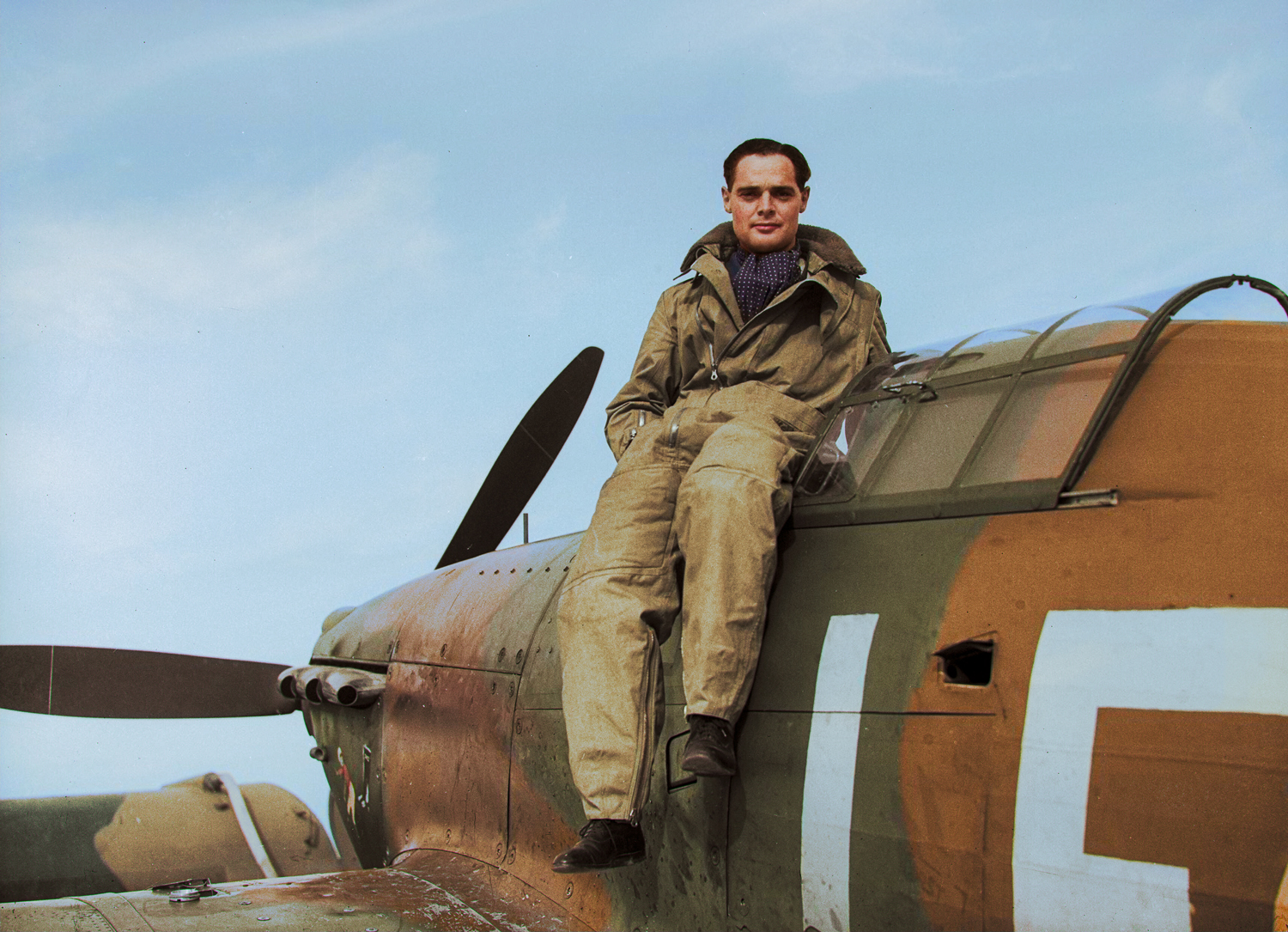
Commanding Officer of 242 Squadron, seated on his Hawker Hurricane at Duxford, September 1940.
Douglas Bader graduated from RAF College in 1930 but in 1931 he crashed during practice at Woodley aerodrome and had both of his legs amputated. His new prosthetic legs earned him the nickname ‘Tin Legs’.
Bader returned to the RAF in 1939 and in June 1940 he was promoted to Squadron Leader and given command of 242 Squadron, leading large formations.
In August 1941 he was forced to bale out of his Spitfire during a raid and lost his prosthetic right leg. He was taken as a POW (Prisoner of War) but a spare leg was flown to him and dropped by parachute. Bader attempted to escape prison many times until the camp was liberated in April 1945.
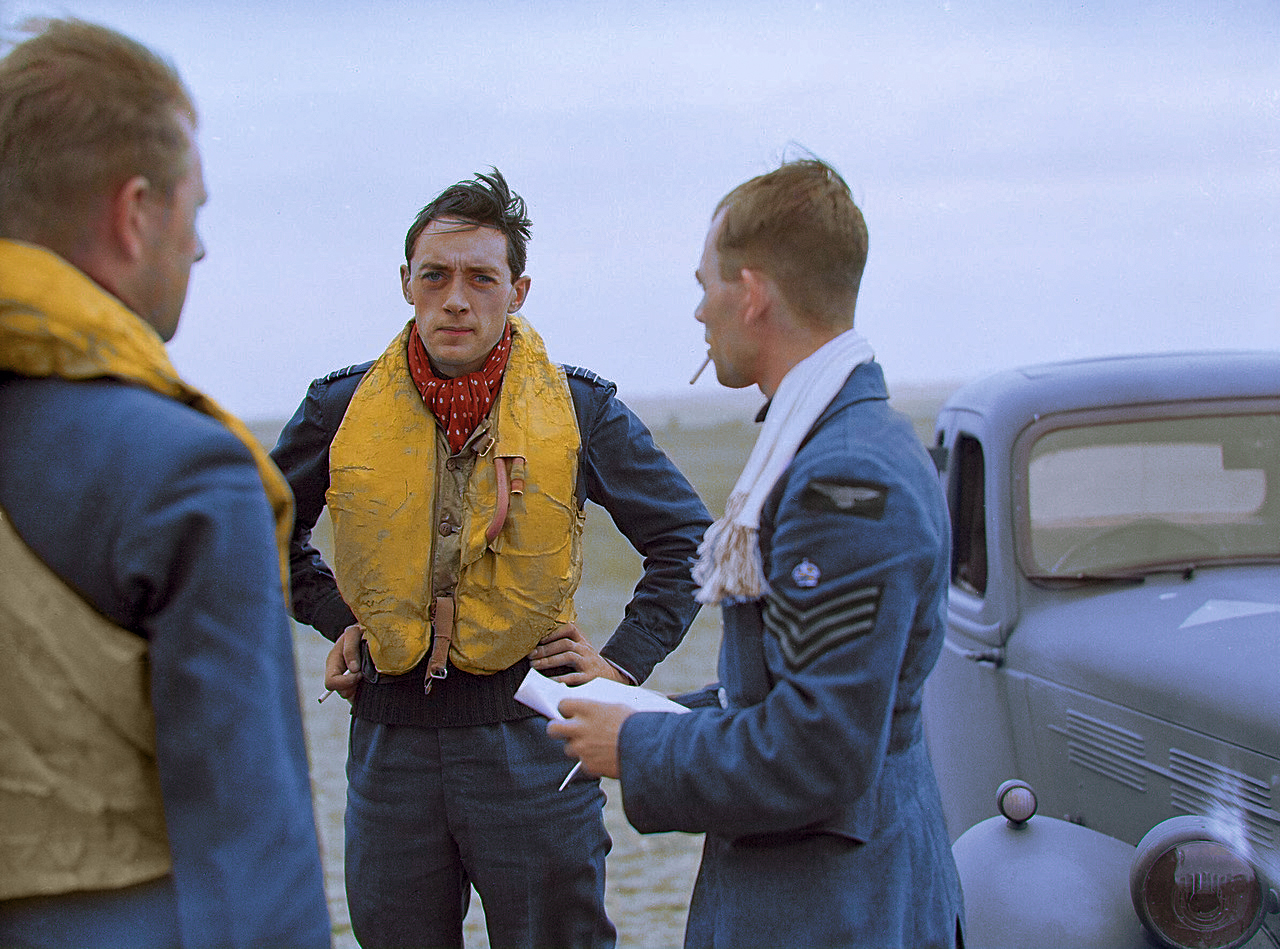
(centre) confers with Flight Lieutenant Walter ‘Farmer’ Lawson (left) and Flight Sergeant George ‘Grumpy’ Unwin at Fowlmere near Duxford,
21 September 1940.
Lane’s 19 Squadron often operated with 242 Squadron, and led by 242’s Squadron Leader Douglas Bader, the squadrons often worked together as part of the Duxford Wing, 12 Group’s ‘Big Wing’ formation.
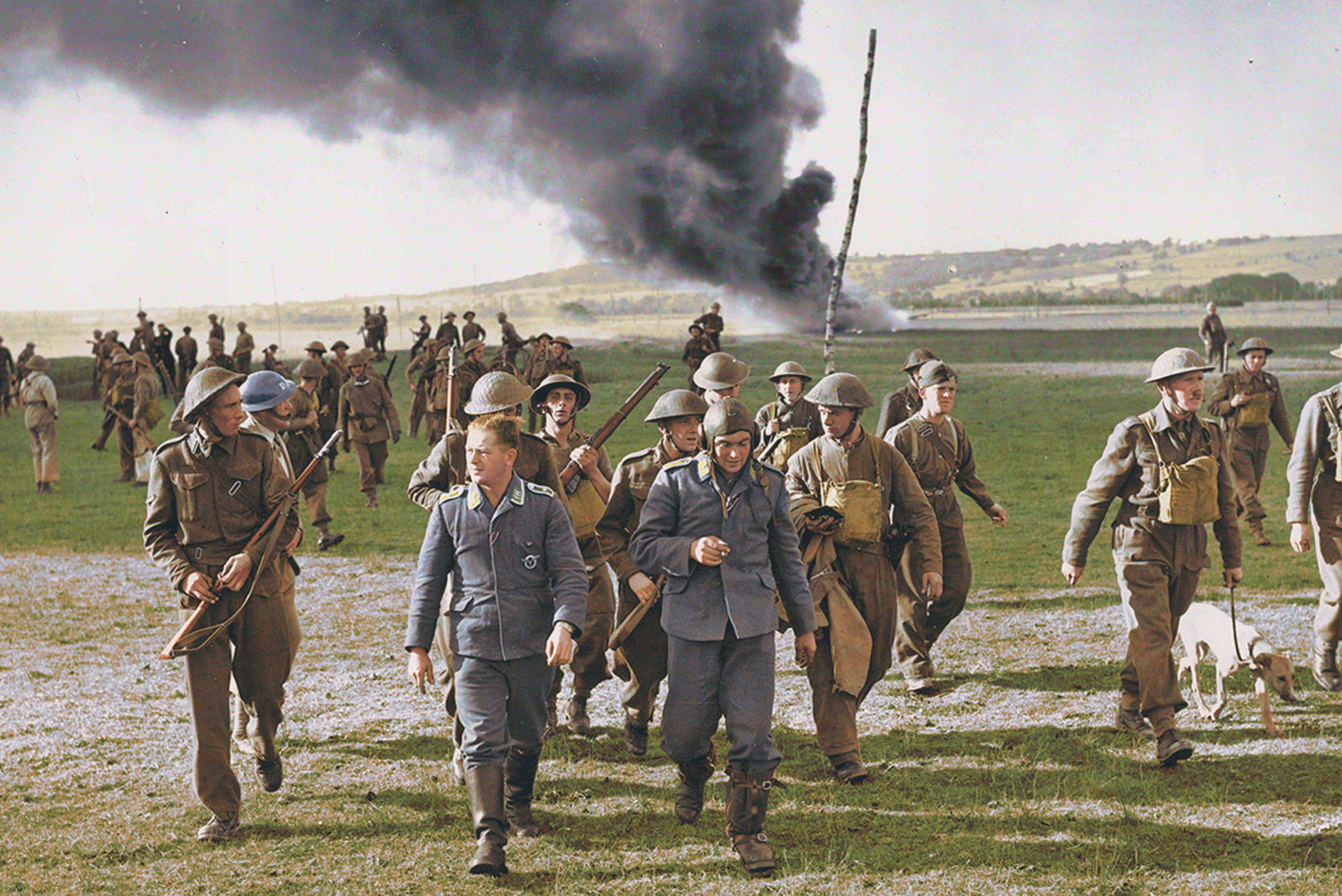
Two German airmen, who parachuted from a Heinkel He 111 bomber that was shot down in the Battle of Britain, are marched off by the Home Guard near Goodwood in Sussex, 12 September 1940.
The Home Guard was a secondary defence force of men set up to support the RAF as the threat of invasion grew during the Luftwaffe bombing campaign in the Battle of Britain.
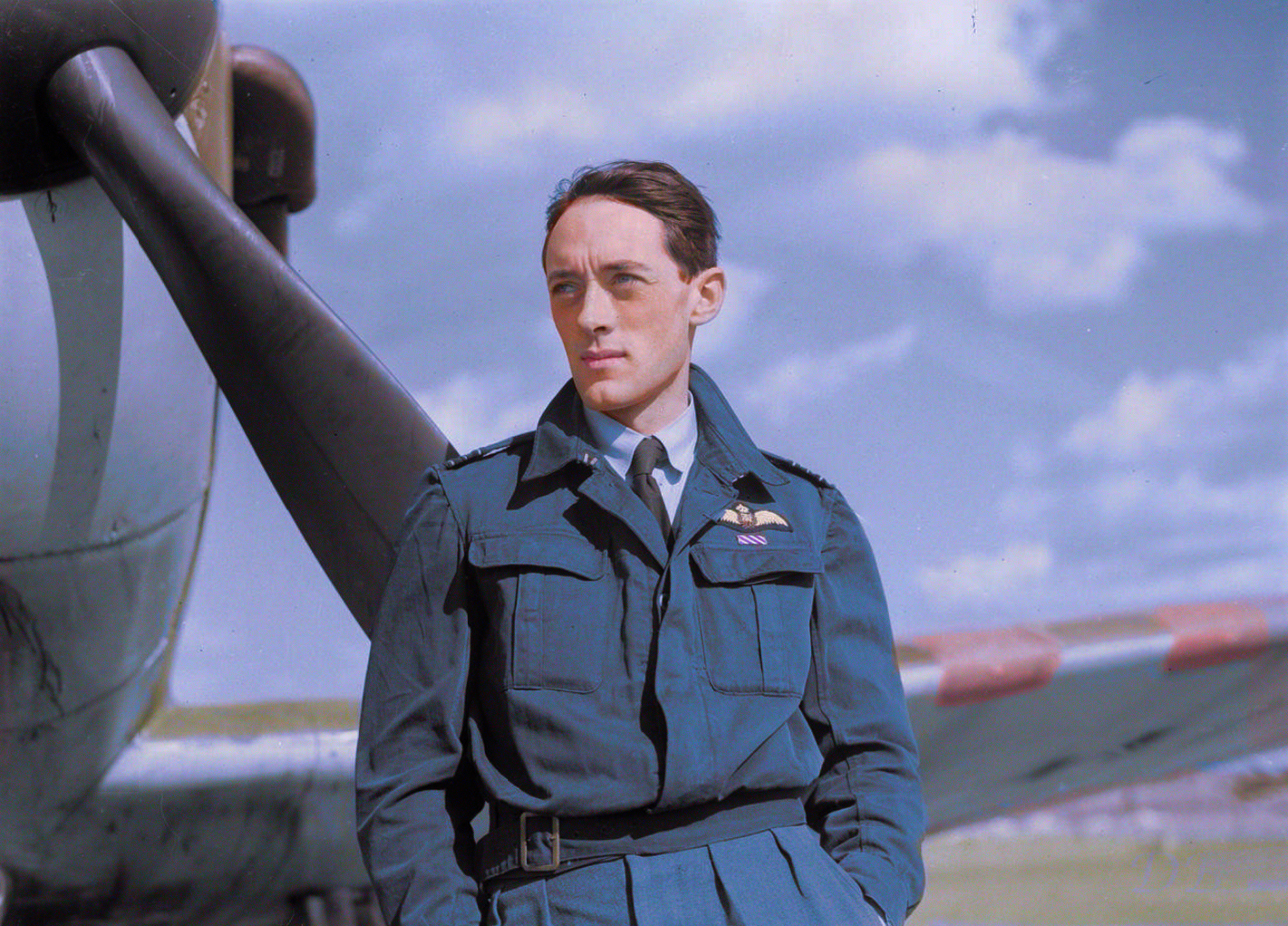
Brian Lane’s abilities as a fighter pilot were recognised when he was promoted to Commanding Officer of 19 Squadron in September 1940. Lane was extremely well liked by his men, and was a flying ace of the Battle of Britain. He wrote a book about his experiences in the Battle, ‘Spitfire!’, which was published in 1942. Tragically, Lane was reported ‘missing in action’ in December that year and has no known grave. He was just 25 years old.

Members of the WAAF (Women’s Auxiliary Air Force) at Biggin Hill, they were awarded the Military Medal for gallantry on 1 September 1940.
Despite an air raid taking place, the ladies had refused to leave their posts and continued commutations with Fighter Command, relaying vital information. The building took a direct hit and they were thrown to the floor, but it was only when the room began to catch fire that they were ordered to finally leave their posts!
Here they stand outside the damaged buildings.
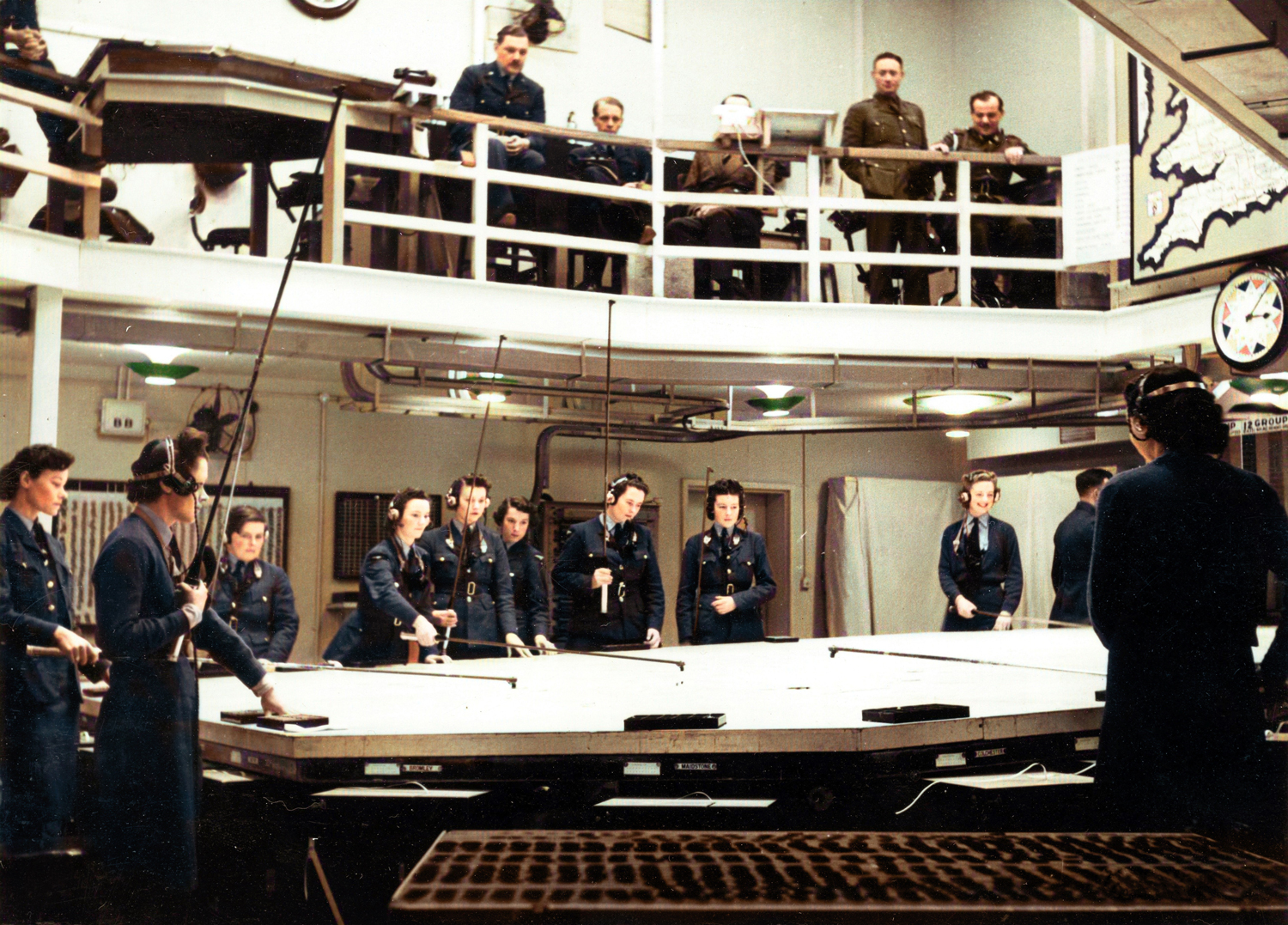
The Operations Room at RAF Bentley Priory was so important during the Battle of Britain because it was the only place which oversaw all aerial movements above Britain. They received the information about these from the Filter Room, and also from the Observer Corps Centres. In March 1940, the work being carried out in the Mansion House was considered so essential that the Operations Room and Filter Room were moved into a newly built underground bunker to protect them from bombing.
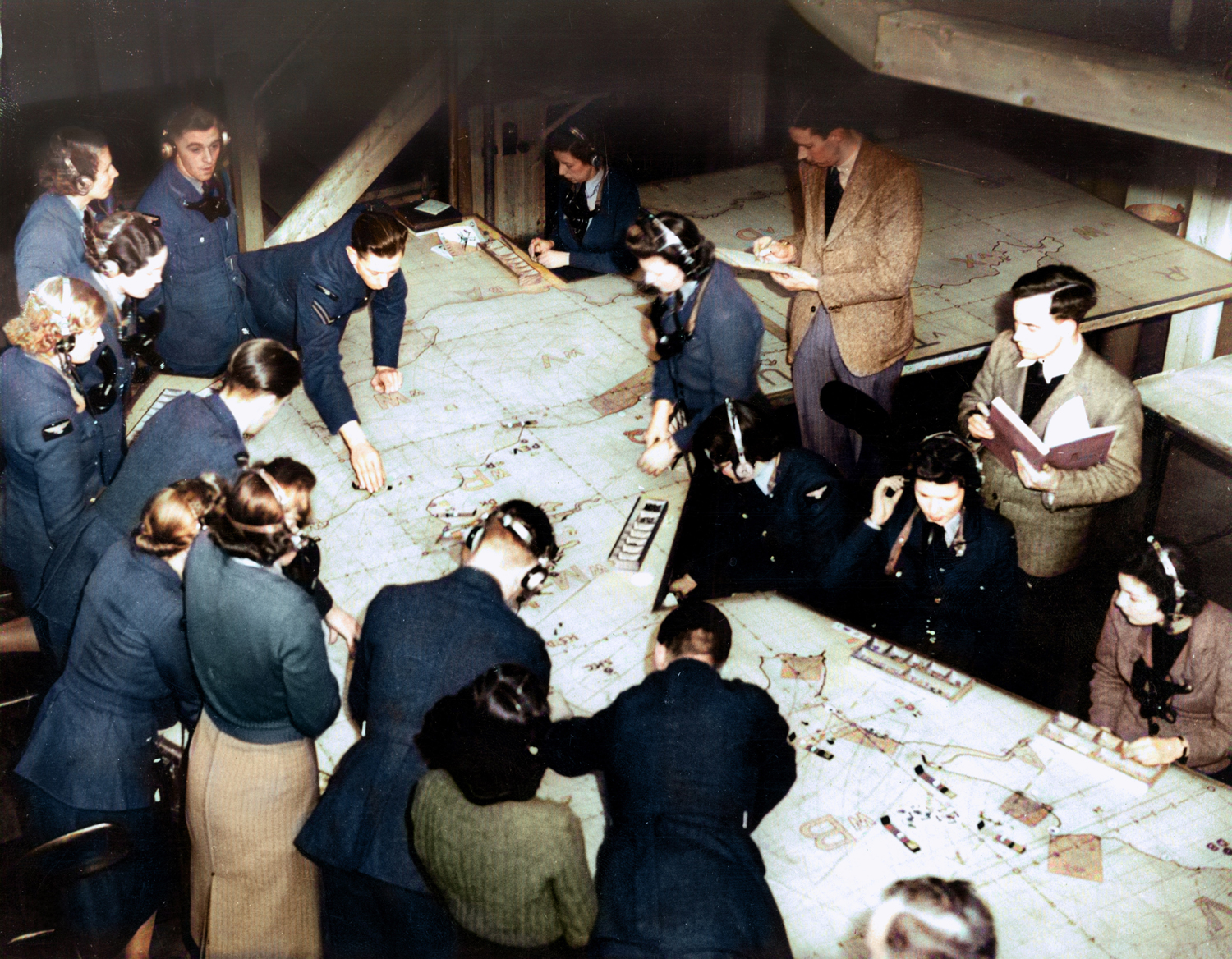
The Filter Room received information about raids from radar stations across the East and South East coast of Britain. Plotters received information from radar operators about raids, and would plot them on the map using a system of coloured counters and raid plaques. Filtered raid information was then passed to Operations Rooms; ensuring scrambled aircrew intercepted enemy raids, at the right position and right time.
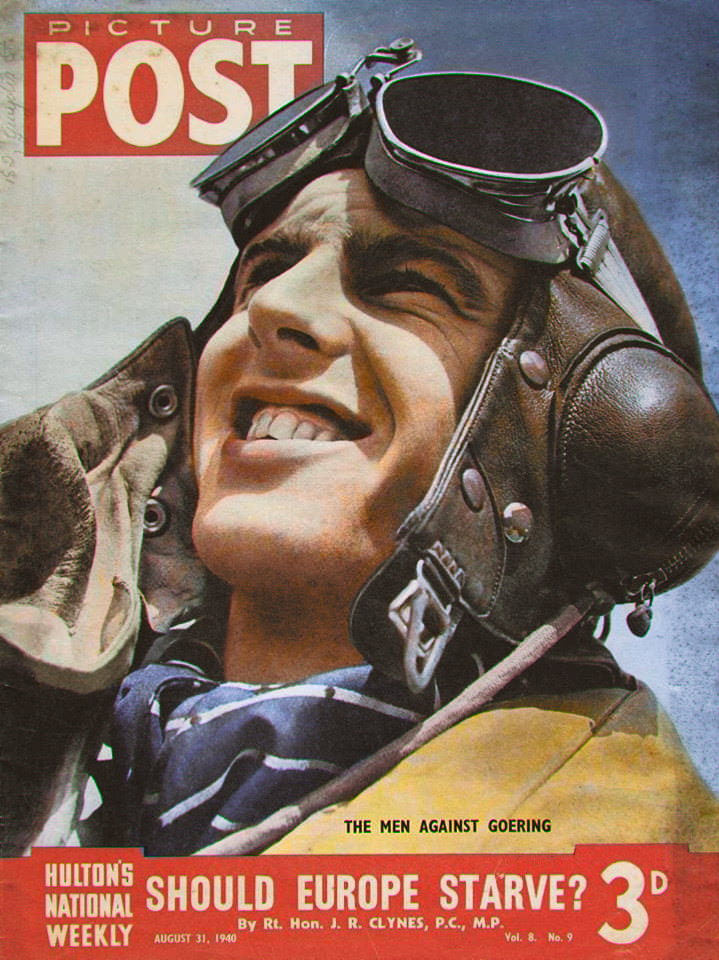
Pilot Officer Keith Reginald Gillman joined 32 Squadron on 10 May 1940. He flew his first operational sortie on 7 June, escorting Blenheims to Abbeville. On 19 July Gillman claimed a Me109 destroyed. He did not return from combat over the English Channel off Dover on 25 August 1940 and was reported ‘missing in action’.
Gillman was the subject of a LIFE magazine cover, published a short while after his loss.
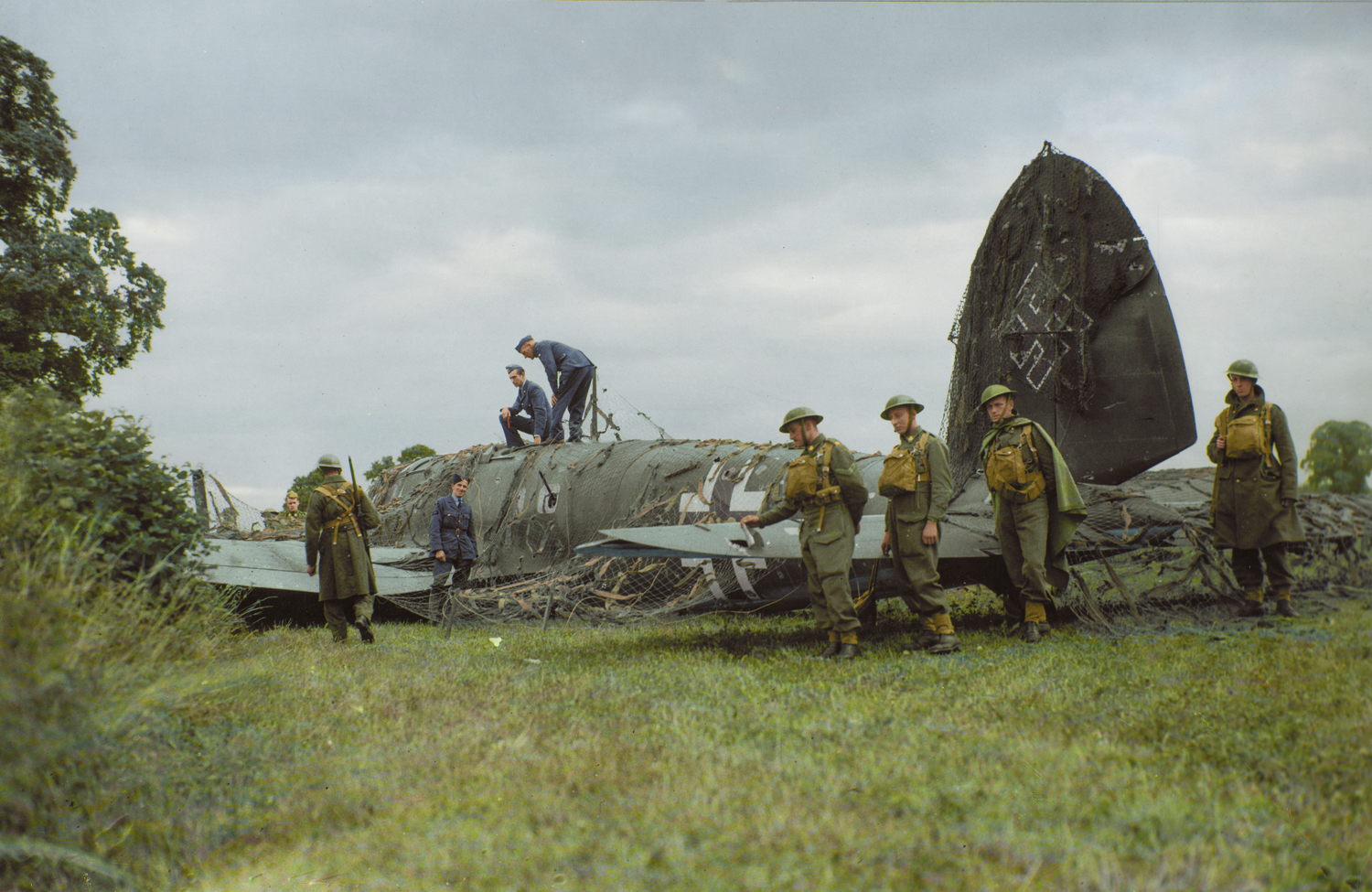
This He 111 of Kampfgeschwader 55 ‘Greif’ was shot down by Hurricanes of 43 Squadron. Oblt Kleinhans was killed and the other four aircrew were taken as POW (Prisoners of War). KG55 was one of the longest serving and best known bomber units in the Luftwaffe during WW2. The wing operated the Heinkel He 111 exclusively until 1943.
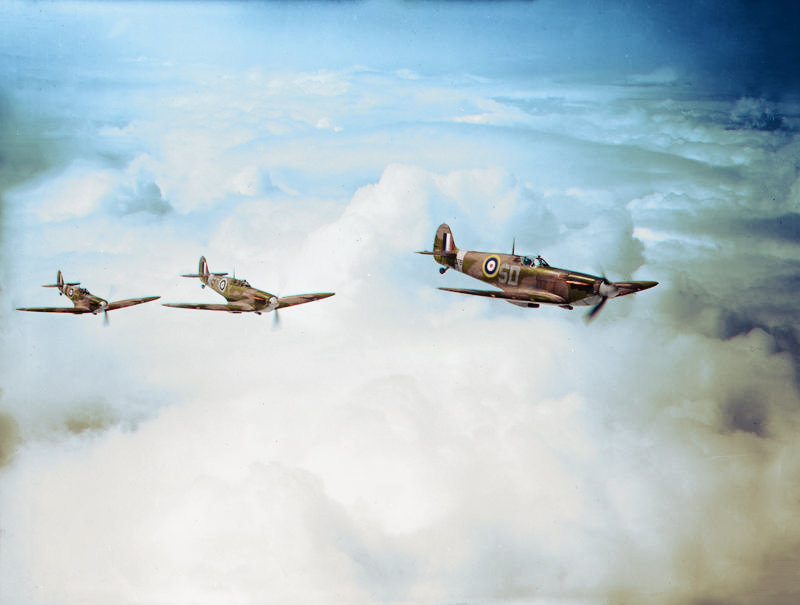
ROYAL AIR FORCE FIGHTER COMMAND, 1939-1945. (CH 2826) Three Supermarine Spitfire Mark Is of No 501 Squadron RAF based at Colerne, Wiltshire, flying in line astern. Copyright: © IWM. Original Source: http://www.iwm.org.uk/collections/item/object/205210069
501 Squadron was one of the most heavily engaged units in RAF Fighter Command and won seven battle honours flying Spitfire, Hurricane and Tempest fighter aircraft during WW2. The squadron saw extensive action during the Battle of Britain, with 19 pilots killed, more than any other squadron.
 What’s On
What’s On Opening Hours & Admission
Opening Hours & Admission









